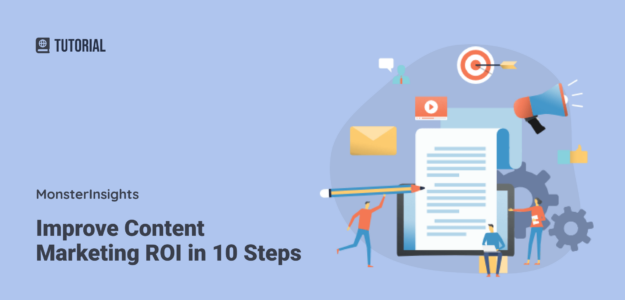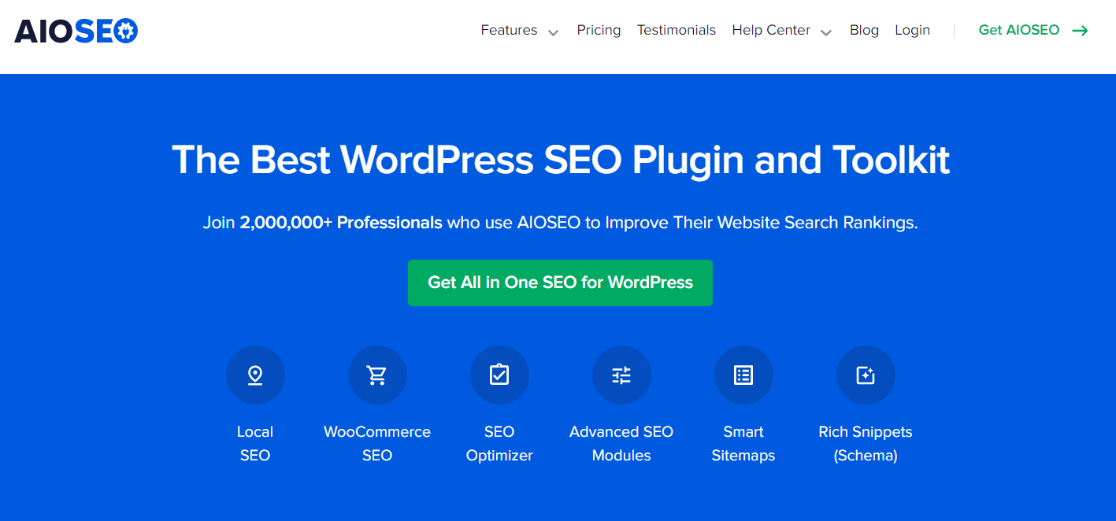Are you looking to improve your content marketing ROI? Creating good content costs time and money and can seem like a lot of wasted effort.
But don’t worry!
In this article, we’ll cover how you can improve your content marketing ROI in 10 easy steps. We’ll ensure you know how to get the most out of every dollar and minute you spend on content marketing.
But first…
Why Should You Focus on Content Marketing ROI?
Focusing on content marketing ROI is essential for several reasons. Here’s why it’s so important:
- Maximize your budget: Ensuring your content marketing efforts are effective helps you get more value from your budget. You’ll spend less and get more.
- Boost engagement: Better content means more people will engage with your website, read your articles, and buy your products.
- Build trust: High-quality, valuable content builds trust with your audience. When people trust you, they’re more likely to become loyal customers.
- Save time: By knowing which strategies work, you avoid wasting time on ineffective tactics, allowing you to focus on what really drives results.
- Increase sales: Effective content marketing leads to more conversions, which means more sales and a better ROI.
Focusing on content marketing ROI helps you make smart decisions, ensuring that every piece of content you create brings you closer to your goals. Let’s examine exactly how you can do this.
Improve Content Marketing ROI in 10 Steps
Improving your content marketing ROI doesn’t have to be complicated. By following these 10 simple steps, you can boost your results and make every dollar count.
Let’s explore how you can turn your content into a powerful tool for growth.
Step 1: Define Clear Objectives and KPIs
First, think about what you want to achieve with your content marketing. Do you want more people to visit your website? Maybe you want to increase sales or make more people aware of your brand.
Whatever your goals are, ensure they match your overall business objectives. For example:
- If you want more leads, focus on creating content that attracts potential customers.
- If you want to increase sales, produce content that highlights the benefits of your products or services.
Once you have your goals, you must figure out how to measure your success. This is where Key Performance Indicators (KPIs) come in. KPIs are signposts that tell you if you’re on the right track. They can include things like:
- Conversion rates: How many visitors to your website turn into customers.
- Lead quality: How likely your leads are to become paying customers.
By defining clear objectives and setting KPIs, you’ll know exactly what you aim for and how to measure your progress. This will help you stay focused and work towards meaningful results.
Step 2: Conduct Comprehensive Keyword Research
You must understand the topics and keywords most valuable to your audience to improve your content marketing ROI.
Start by using SEO tools like Semrush, which we highly recommend.
Semrush allows you to identify keywords with a high search volume, meaning many people are interested in them, and keywords with low competition, giving your content a better chance to shine.
By choosing the right keywords, you ensure that your content is more likely to be found by people searching for information on those topics. This means more visitors to your website and a higher chance that they will engage with your content.
By prioritizing keyword research, you can ensure that your efforts are targeted and effective, leading to better results and a higher return on investment for your content marketing activities.
Read our guide on How to Do Keyword Research for SEO to learn more.
Step 3: Develop a Robust Content Strategy
Creating a solid content strategy is crucial for boosting your content marketing ROI.
The first step is to map your content to different buyer personas and their stages in the sales funnel. A buyer persona is a detailed profile of your ideal customer, including their needs, challenges, and interests.
By understanding your audience, you can create content that addresses their specific needs at each stage of their journey, from awareness about a product to deciding that they’ll buy it.
Next, think about the types of content you want to create and where you will share it. This is your content format and distribution plan.
You might write blog posts, produce videos, or design infographics depending on your audience’s preferences. Additionally, decide on the channels you will use to distribute your content, such as social media, email newsletters, or your own website.
Remember to include cornerstone content in your strategy. This high-quality, valuable content covers important topics in depth and serves as a foundation for your entire content library.
Planning your content carefully and ensuring it’s tailored to your audience can increase engagement and drive more meaningful results, ultimately improving your content marketing ROI.
Read What Is Cornerstone Content? + How to Create It for a full guide.
Step 4: Create High-Quality Content
Creating high-quality content has never been more important, especially with Google’s recent focus on helpful content updates and the emphasis on EEAT (Experience, Expertise, Authoritativeness, and Trustworthiness).
You can read more about Google’s Ranking Factors.
These updates mean that Google rewards content that genuinely helps users and is backed by credible information. To improve your content marketing ROI, you must prioritize creating engaging, reliable content that meets your audience’s needs.
Additionally, always keep user intent at the forefront. Ask yourself, “Is my content really giving the answers my audience wants?” Ensure that your content directly addresses your readers’ questions and concerns.
Read How to Master SEO Search Intent to Improve Your Rankings for a full tutorial.
Focusing on high-quality, helpful content that aligns with Google’s updates and EEAT principles can attract more visitors and increase engagement.
This boosts your website traffic and helps you build a strong reputation, ultimately leading to a higher return on your content marketing investment.
Step 5: Optimize Content for SEO
Optimizing your content for SEO is essential to ensure that it ranks well in search engines and reaches more people. This involves a couple of key areas: on-page SEO and technical SEO maintenance. Both are super important.
On-page SEO involves making adjustments directly to your content to make it more search-engine friendly. This includes things like:
- Keyword optimization: Using relevant keywords that people are searching for.
- Meta descriptions: Creating compelling meta descriptions that appear in search results.
- Internal linking: Linking to other pages on your site to keep users engaged.
To simplify on-page SEO, AIOSEO (All in One SEO) is the best SEO tool.
AIOSEO allows you to edit meta descriptions and titles easily and gives SEO recommendations for your content:
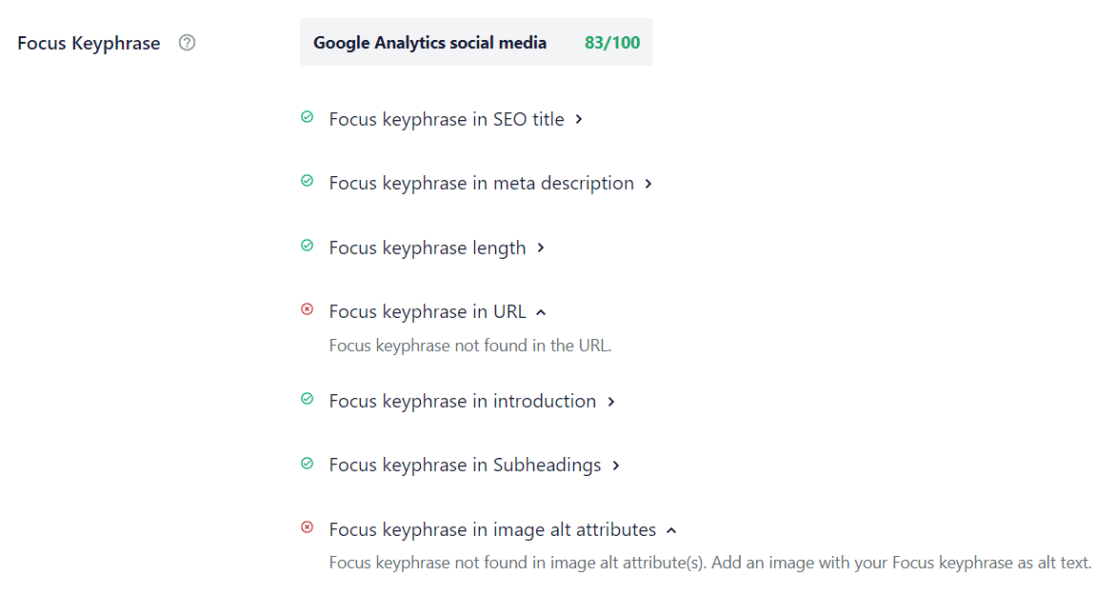
Plus, it provides tools to help you set up internal links, ensuring your site is easy to navigate and SEO-friendly.
Technical SEO is another important aspect of SEO. This is about ensuring your website runs smoothly. This includes:
- Fast load times: Ensure your site loads quickly to keep visitors happy.
- Mobile optimization: Make sure your site looks good and works well on mobile devices.
- No broken links: Regularly check for and fix broken links to keep your site in good shape.
AIOSEO also supports technical SEO by helping you monitor and maintain your website’s health. It provides tools to check for common issues affecting your search engine rankings, ensuring your site always performs at its best.
Using AIOSEO for both on-page and technical SEO can effectively boost your content’s visibility and performance in search results, ultimately improving your content marketing ROI.
Check out our full SEO checklist to ensure your content and pages are SEO-optimized.
Step 6: Strategic Content Distribution
It’s important to use a variety of distribution channels to maximize your content’s reach. Share your content on various social media platforms like Facebook and Instagram to reach a broad audience.
Partnering with influencers can introduce your content to new followers, while PPC advertising on platforms like Google Ads can quickly target specific demographics.
Additionally, repurpose your content into different formats to attract different audiences.
For example, you can turn a popular blog post into a video or an infographic, making it more engaging and shareable. Converting a webinar into a podcast can also reach listeners who prefer audio content.
By strategically distributing and repurposing your content, you can ensure it reaches and resonates with a wider audience, enhancing your content marketing ROI.
Step 7: Measure and Analyze Performance
Measuring and analyzing your content’s performance is important since it ensures you’re not shooting in the dark.
Start by using analytics tools like Google Analytics to track key metrics such as bounce rate, time on page, and conversion rates. These metrics help you understand how well your content engages your audience and drives results.
For WordPress users, MonsterInsights is the top solution for measuring performance. It connects your WordPress site directly with Google Analytics without using code, making it easy to view all your important data right within your WordPress dashboard:
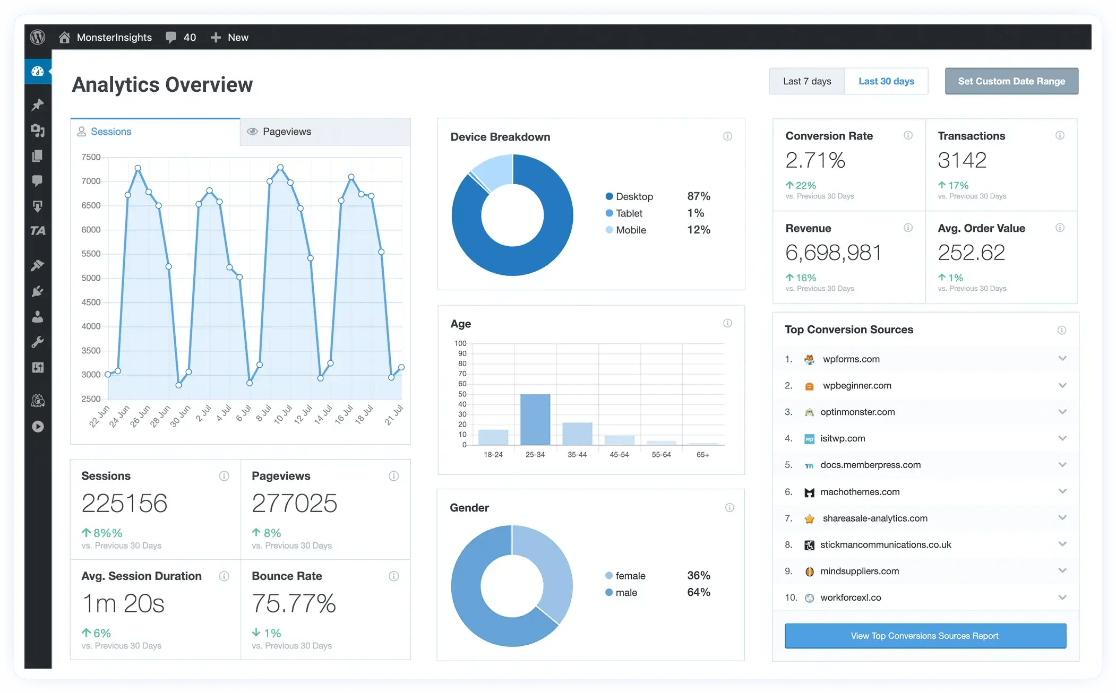
MonsterInsights also integrates with Google Search Console and provides a Google Search Console report in WordPress. This lets you see which keywords drive traffic to your site and how your content performs in search results:
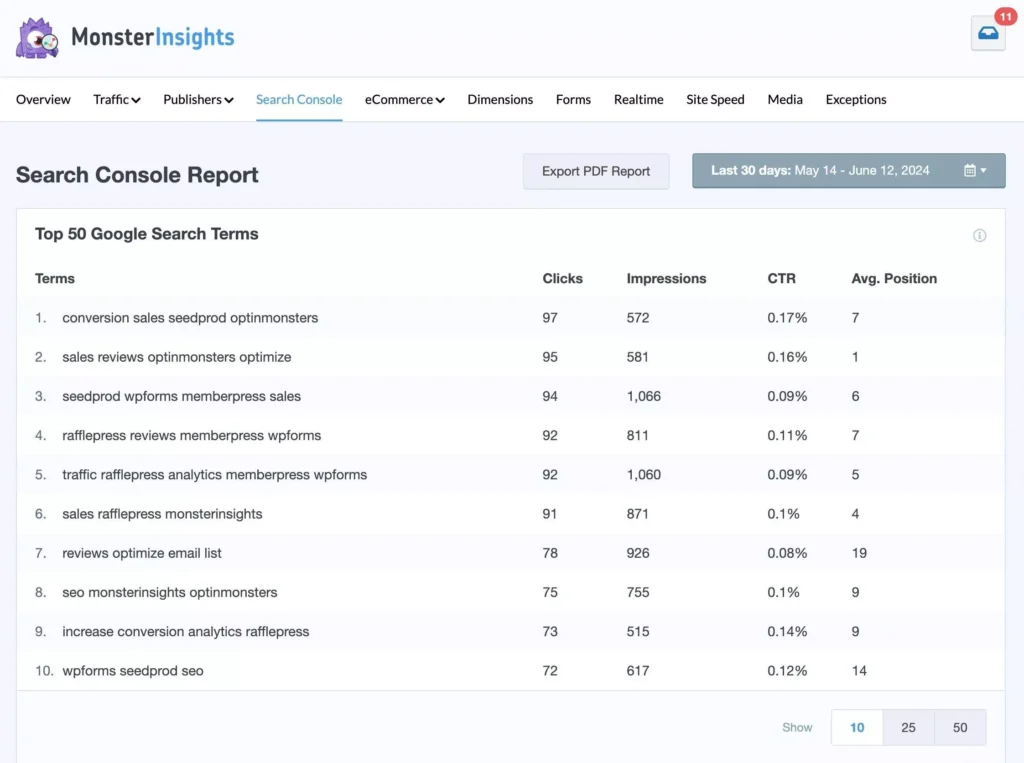
In addition, MonsterInsights lets you see your top pages and content, helping you identify what resonates most with your audience. It also offers author tracking to monitor which authors’ content performs best:
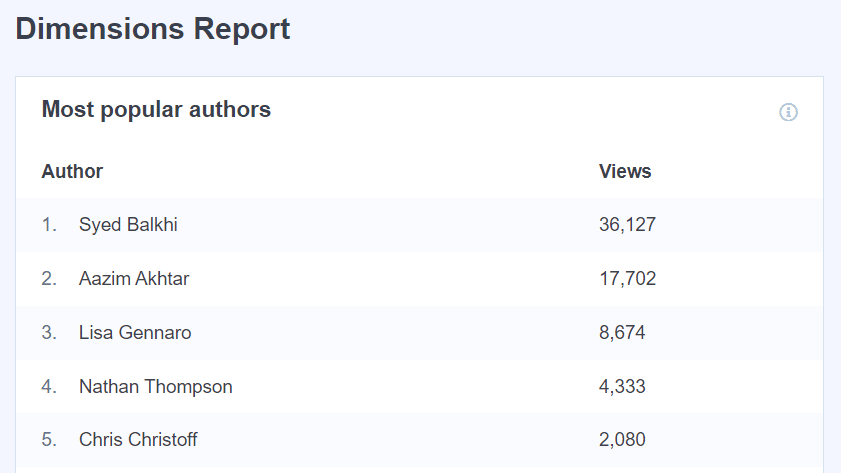
This information is invaluable because it lets you know exactly what your audience likes, allowing you to create more content they love.
With MonsterInsights, you can easily enable advanced tracking features like keyword tracking, event tracking, eCommerce tracking, link click tracking, and more with just a click.
Do you get overwhelmed by website reports and data? No problem!
MonsterInsights also allows you to chat about your website data with Conversations AI. This innovative tool allows you to ask specific questions and get instant answers right within your WordPress dashboard.
Want to know which blog post is the most popular or where your traffic is coming from? Just ask Conversations AI to get the insights you need without navigating through complex reports:
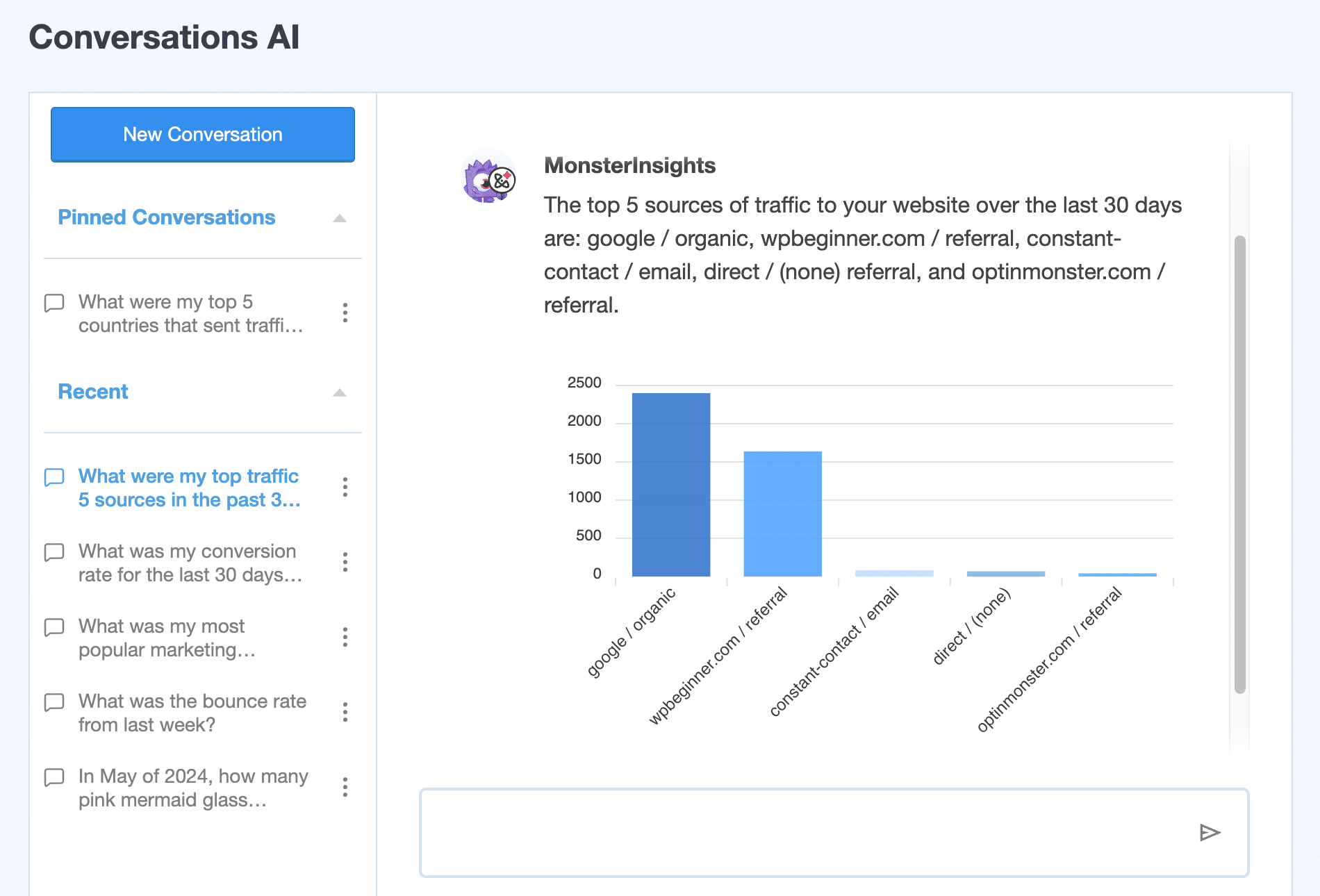
This makes it incredibly simple to monitor how your content is performing and make informed decisions to enhance your content marketing strategy.
Get started with MonsterInsights Pro today to use Conversations AI.
By regularly measuring and analyzing your content’s performance with tools like MonsterInsights, you can make data-driven decisions that refine your content strategy and ensure you get the best possible results.
Step 8: Optimize and Refine Continuously
Optimizing and refining your content is a continuous process you must master.
Regularly testing different elements of your content, such as headlines, calls to action, and formats, helps you determine what works best and enhances your content’s effectiveness.
For instance, try experimenting with different headline styles to see which attracts more clicks or varying your calls to action to determine which generates more conversions.
It’s also important to periodically update your older content with new information and the latest SEO best practices. Adding updated statistics, new insights, or additional keywords can breathe new life into your existing content and ensure it continues to attract and engage your audience.
Remember, SEO is an ongoing process, not a one-time task.
Regularly revisiting and refining your content ensures it remains effective and aligned with current trends. Committing to continuous optimization keeps your content fresh, relevant, and valuable to your audience.
Step 9: Leverage Backlinks and Social Proof
Leveraging backlinks and social proof is a powerful way to enhance your content marketing ROI.
Backlinks are links from other websites to your content, significantly boosting your site’s authority and improving its search engine rankings.
Read our guide on How to Get Backlinks (15 Quick and Simple Strategies).
Monitoring social engagement is also crucial.
Track social media mentions and interactions to understand how your content is received and shared. This can give you valuable insights into the impact and reach of your content, helping you see its effectiveness and make necessary adjustments.

Finally, MonsterInsights provides a Referrals report right within WordPress, letting users see their top referral sources and the traffic coming from them:
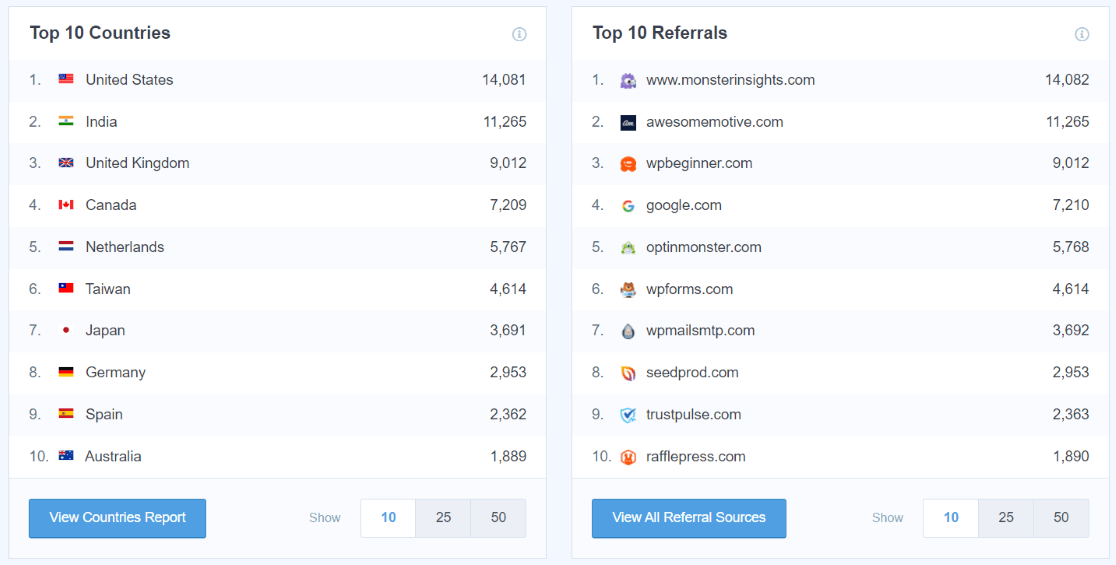
Why not see if you can partner up with your top referral sources to get more backlinks or provide a discount code to their audience, driving more traffic and potential customers to your site?
By actively seeking out backlinks and monitoring social proof, you can enhance the authority of your content and extend its reach.
Step 10: Set Benchmarks and Analyze Competitors
Setting benchmarks and tracking your progress is essential to continually improving your content marketing ROI. This step builds on the KPIs you established in Step 1, allowing you to measure how well your content performs and identify areas where you can improve.
Set benchmarks for key metrics such as website traffic, leads, and conversion rates. These benchmarks serve as reference points to measure your progress over time and help you understand whether your content strategies are effective.
For instance, you might set a goal to increase website traffic by 20% over the next quarter or boost conversion rates by 15%.
In addition to internal metrics, you should regularly compare your content performance against your competitors.
This analysis can reveal gaps in your strategy and highlight areas where you can gain an edge. You can adapt your approach by understanding what competitors are doing well and where they fall short.
Read How to Track Competitor Website Traffic and Ethically Steal It to see how you can take advantage of what you find.
For WordPress users, MonsterInsights provides an excellent solution for tracking progress and setting benchmarks. The plugin integrates with Google Analytics to offer a comprehensive overview of your website’s performance, including detailed reports on traffic, user behavior, and conversion rates.
Get started with MonsterInsights today!
That marks the 10th and final step of our guide.
We hope you liked this article and it helped you improve your content marketing ROI and strategy. Check out these other articles to learn more:
- 8 Best SEO Content Checker Tools for Content Optimization
- 9 Google Analytics SEO Hacks to Increase Search Traffic
- Top 11 Important Google Analytics Metrics to Track in 2024
- Ultimate Guide to Google Analytics for Publishers & Bloggers
Remember to follow us on X, Facebook, and YouTube for more reviews, tutorials, and helpful Google Analytics tips.
